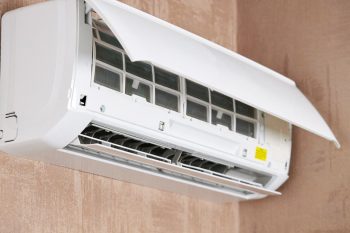
In this comprehensive guide, we’ll dive deep into the process of changing the agitator in a washing machine. This key component is found in the wash basket of top-loading models and serves a vital role in providing a powerful cleaning action by creating friction between clothes, helping remove tough stains and loosen dirt particles.
To change the agitator in a washing machine, first unplug the washer and remove the agitator cap or fabric softener dispenser. If there’s a dust cap, remove it too. Then, unscrew the mounting bolt securing the agitator to the drive shaft and lift the agitator out. To install the new agitator, align it with the drive shaft, lower it into place, and tighten the bolt. Replace the dust cap or fabric softener dispenser and test the machine. Always consult a professional if you’re unsure about any step.
What is an Agitator and Why Change It?
An agitator is a tall spindle, often vaned or finned, that twists back and forth, rubbing against clothes to help break down soils and stains. Essentially, it’s the workhorse of your washing machine, ensuring that your clothes come out clean and fresh.
However, over time, the agitator can become worn or damaged, leading to poor cleaning performance. You might also need to change or remove the agitator to accommodate larger or bulkier items, such as blankets and comforters, or to provide a gentler clean for delicate items like undergarments.
Signs of a Faulty Agitator
Here are some signs that your agitator may need to be replaced: – The agitator isn’t moving or turning – There’s a grinding noise during the wash cycle – The upper part of the agitator isn’t moving – Clothes aren’t getting cleaned properly
Tools and Materials Needed for Replacement
Before you start, gather the following tools and materials: – Adjustable wrench or socket wrench set – Flathead screwdriver – Pliers – Bucket or tray (for catching excess water) – Cleaning brush or toothbrush – Mild cleaning agent or vinegar (for cleaning the agitator) – New agitator (compatible with your specific washing machine model) – Clean cloth or towel – Water
Step-By-Step Guide to Changing an Agitator
Removing the Old Agitator
- Unplug the washer: Always disconnect the washing machine from the power source before starting any repair work.
- Remove the agitator cap or fabric softener dispenser: Use a flat-head screwdriver to pry the cap off or simply pull the dispenser off with your hands.
- Remove the dust cap (if applicable): On some models, you may need to pull out a dust cap that rests just inside the top of the agitator.
- Unscrew the mounting bolt: Secure the agitator base and use a long socket wrench to unthread the mounting bolt securing the agitator to the drive shaft.
- Lift the agitator: With the bolt sufficiently loosened, you can pull the agitator straight up to remove it. Be prepared to support the agitator when lifting, as it can be heavy.
Installing the New Agitator
- Position the new agitator: Align the new agitator with the drive shaft and lower it into place.
- Secure the agitator: Using your socket wrench, tighten the bolt to secure the agitator to the drive shaft. Make sure it’s snug but not overtightened.
- Reinstall the dust cap or fabric softener dispenser: Replace the dust cap or fabric softener dispenser by pushing it firmly into place on top of the agitator.
- Test the machine: Plug the washing machine back in and run a small load to ensure the agitator is working correctly.
Common Mistakes to Avoid
Changing the agitator in a washing machine can be a fairly straightforward process, but there are some common mistakes to avoid. These include not unplugging the appliance before starting, overloading the machine, improper loading, ignoring worn or damaged parts, not checking the lid switch, not inspecting the directional cogs, not checking the agitator coupler, and not inspecting the drive belt.
By following this in-depth guide, you should be able to successfully change the agitator in your washing machine and ensure your clothes are getting the clean they deserve. As always, if you’re unsure about any part of the process, it’s best to consult a professional technician for assistance.
Frequently Asked Questions
How do I know if my washing machine agitator is compatible with my machine model?
You can check the compatibility of an agitator by referring to your washing machine’s user manual or by checking the product specifications on the manufacturer’s website. Another reliable way is to use the model number of your washing machine to search for compatible parts online.
How often should I change the agitator in my washing machine?
The lifespan of an agitator varies based on usage and care, but typically you should not need to replace it unless it’s damaged or worn out. Some signs of a faulty agitator include the agitator not moving, a grinding noise during the wash cycle, or clothes not getting cleaned properly.
What happens if I don’t change a faulty agitator?
A faulty agitator can affect the performance of your washing machine. If not replaced, it can lead to poor cleaning results, excessive wear on other parts of the machine, and potentially more costly repairs in the future.
Can I use any cleaning agent to clean the agitator?
It’s best to use a mild cleaning agent or vinegar to clean the agitator. Harsher chemicals may damage the agitator or other parts of the washing machine. Always ensure to rinse thoroughly to remove any residue.
Can I replace the agitator myself, or should I hire a professional?
Replacing the agitator is a relatively straightforward process that most people with basic DIY skills can handle. However, if you’re not comfortable doing it yourself, or if you encounter any issues during the process, it’s best to hire a professional technician to avoid causing further damage to the machine.












